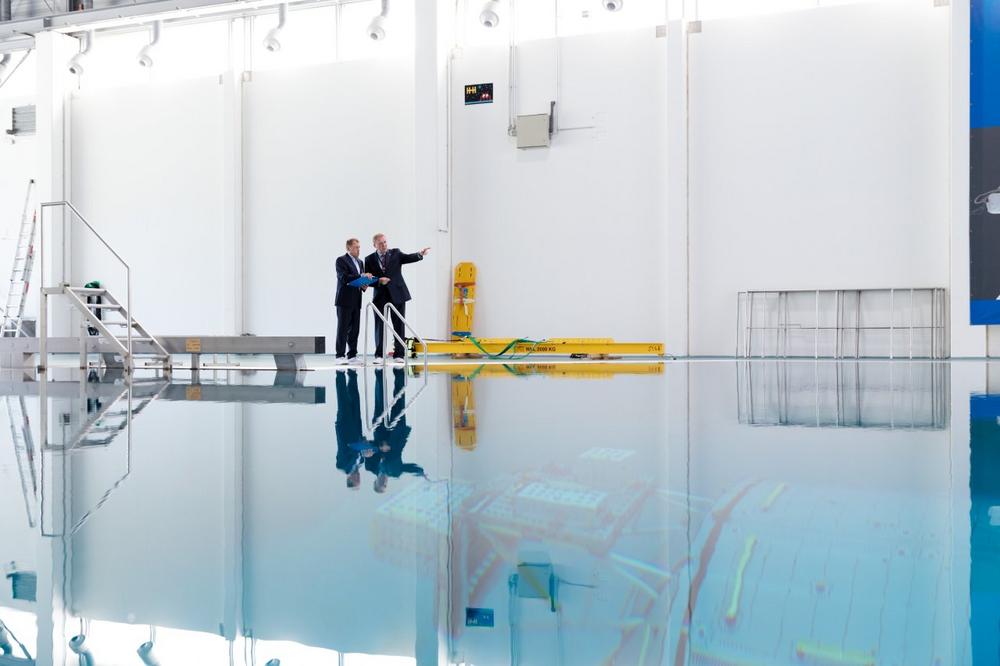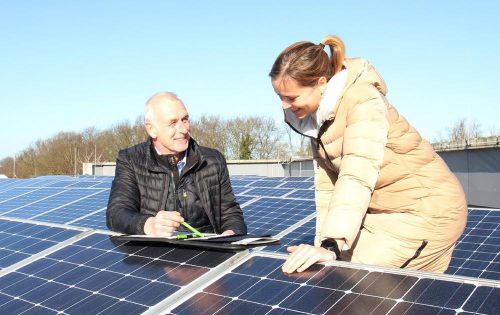
Protecting the Climate with Environmental Management according to ISO 14001
Company Context Is Increasingly Important
In its current version, the standard places particular emphasis on a company’s context. What do customers, business partners, and investors expect in terms of climate protection? What official requirements and political developments are relevant for the organization? Clause 4 of ISO 14001 describes the necessity to account for the growing needs of different interest groups and to examine whether this requires tangible action. “By keeping a close eye on the requirements of its environment and communicating its climate protection efforts accordingly, a company can be seen to be taking responsibility and – in calls for tender, for example – gain a crucial competitive advantage,” explains Anja Oels, ISO 14001 Product Manager at TÜV Rheinland.
Life Cycle Assessment: Analyzing the Entire Value Chain
When it comes to planning measures, ISO 14001 (Clause 6) stipulates that the environmental aspects of activities, products, and services must always be assessed “according to a life cycle perspective.” This means that an industrial company should analyze not only its own production, but also the entire value chain. Climate-relevant processes when procuring raw materials, for example from mines or agriculture, are as much a factor as long transport routes or elaborate product packaging that is difficult to recycle. A more comprehensive perspective, which also considers the supply chain, for example, is sensible not least with regard to economic efficiency: “By switching to a regional supplier that operates in a sustainable manner, a company may be able to save as much CO2 as by expensively insulating their own production hall,” explains Anja Oels. “The systematic capture and analysis of all relevant data makes it possible to make the greatest impact for climate protection using the resources on hand.”
Determine Risks and Opportunities Systematically
Replacing fossil fuels with renewable energy, optimizing transport routes, or recycling – there are numerous ways for companies to improve their carbon footprint. ISO 14001 does not prescribe specific measures, but it does help identify the relevant action areas: “The standard sets up a framework and provides suitable control and management tools. Companies can thus systematically ascertain their environmental impact, analyze processes, and set priorities on this basis,” says Anja Oels.
In any case, companies benefit from a detailed analysis of risks and opportunities, which is also stipulated in Clause 6 of ISO 14001. It is not only a company’s own climate-damaging emissions that present a risk. A company can also be put at risk by climate change itself, the effects of which have become palpable. For example, what do increasingly dry summers mean for a power station that draws its cooling water from a river? Or for an inland shipping company that has to reduce its operations in the event of low water levels?
Continuous Improvement: Audits Also Becoming More Climate-Friendly
The fundamental aim of an environmental management system is the continuous and verifiable improvement of environmental performance (Clause 10). Regular audits by independent testing service providers such as TÜV Rheinland in the context of certification always offer specific pointers for improvement. “Incidentally, the certification procedures themselves are also being continually improved and made more climate-friendly,” says Anja Oels, “with less travel, for example.” In the wake of the coronavirus protection measures, TÜV Rheinland introduced remote audits everywhere possible. This means that the audit does not take place at the company. Instead, the auditors work through the program as far as possible via video conference with the customers. “We will definitely continue to take this into consideration after the pandemic is over.”
Whether a digital process or a “classic” audit on site, certification by a neutral, accredited testing service provider like TÜV Rheinland allows companies to credibly demonstrate their commitment to climate and environmental protection. This is an increasingly important evaluation criterion for customers, investors, contractual partners, and the public.
Further information about ISO 14001 can be found on tuv.li/ISO_14001
TÜV Rheinland stands for safety and quality in almost all areas of business and life. Founded almost 150 years ago, the company is one of the world’s leading testing service providers with more than 21,400 employees and annual revenues of 2.1 billion euros. TÜV Rheinland’s highly qualified experts test technical systems and products around the world, support innovations in technology and business, train people in numerous professions and certify management systems according to international standards. In doing so, the independent experts generate trust in products as well as processes across global value-adding chains and the flow of commodities. Since 2006, TÜV Rheinland has been a member of the United Nations Global Compact to promote sustainability and combat corruption. Website: www.tuv.com
TÜV Rheinland
Am Grauen Stein
51105 Köln
Telefon: +49 (221) 806-2148
http://www.tuv.com
Pressesprecherin Systeme
Telefon: +49 (221) 806-4465
E-Mail: Antje.Golbach@de.tuv.com
![]()




